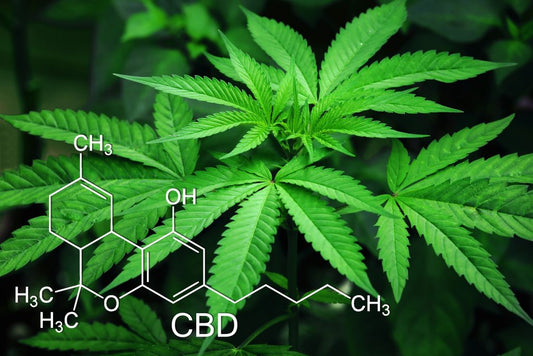Written by: Rebecca Walters
Reviewed by: Dr. Matthew Scott, PhD & DHSc
Date: 07/5/2010
The Entourage Effect & Cannabis CBD
With the legalization of Cannabis, research has increased to investigate and discover the plants benefits. It’s already well known for its ability to manage and improve various ailments, ranging from chronic pain to anxiety, but many want to know how or why. Some of its known attributes include but are not limited to: anti-inflammatory, anti-analgesic (pain), anti-anxiety, anti-seizure, anti-cancer, and anti-tumor, making it a great preventative. It’s no surprise that so many have turned and come to rely on these all natural, plant derived CBD products that offer tremendous health and wellness benefits, with no known negative sides affects.
There are millions of people actively using CBD, who can testify to the efficacy of CBD products for a variety of reasons. Overall though, the use of cannabis, its compounds, and terms leave many confused. We hope we can clear up any confusion, so you can make the best decision for your health & wellness.
“Entourage Effect” what does it mean?
A simple explanation of the term “Entourage effect”; When all the cannabinoids & terpenes found naturally in cannabis, are extracted and reformulated into an cannabis extract product (example, CBD Wellness 1500mg Full Spectrum CBD Rich tincture) the compounds work synergistically, increasing the potency, benefits, & effectiveness that cannabis and CBD are well known for.
When these compounds are isolated, research has shown they are not effective nor as strong. In cannabis “entourage” refers simply to the fact that together cannabinoids and terpenes work as team to enhance one another’s effects and benefits, better than the sum of any individual compound standing alone.
Compounds Involved in the Entourage Effect?
There are hundreds of known compounds in the cannabis plant, with new one still being discovered. There are 3 main compound groups responsible for the entourage effect. They are:
Cannabinoids
Phytocannabinoids – cannabinoids naturally produced by plants (cannabis), interacts with our ECS (endocannabinoid system).
Endocannabinoids - cannabinoids naturally produced in the body, interacts with our ECS.
Terpenes/terpenoids — compounds responsible for plants smell and taste, interacts with our ECS.
Flavonoids — compounds responsible for flavor or taste, interacts with our ECS.
Phytocannabinoids and Endocannabinoids
The ECS exists, it is always actively working in your body, even if you don’t use cannabis CBD.
The endocannabinoid system (ECS) is a complex cell-signaling system responsible for regulating a wide range of functions and processes.
Some of the functions and process our ECS regulates include but not limited to:
- sleep
- mood
- appetite
- memory
- reproduction and fertility
How does it work?
The ECS involves three core components: endocannabinoids, receptors, and enzymes.
Endocannabinoids, also called endogenous cannabinoids, are molecules naturally made by your body. Similar to phytocannabinoids (plant made), except they’re produced naturally in your body.
Experts have identified two key endocannabinoids so far: anandamide (AEA) & 2-arachidonoylglyerol (2-AG)
These endocannabinoids help maintain homeostasis, keeping internal functions running smoothly. Everyone’s body produces them naturally, as needed. This makes it difficult to know what an individual’s typical cannabinoid levels are.
Endocannabinoid receptors are found throughout our bodies. Endocannabinoids bind to varies systems & organs, which communicates to the ECS whenever a response or action is needed.
There are two main endocannabinoid receptors
CB1 receptors, which are mostly found in the central nervous system.
CB2 receptors, which are mostly found in your peripheral nervous system, especially immune cells.
Endocannabinoids - cannabinoids can bind to either or both receptors. The resulting effects depend on where the receptor is located and which endocannabinoid or cannabinoid it binds to.
Example: An individual is suffering from chronic neck pain; endocannabinoids or cannabinoids target the CB1 receptors in a spinal nerve, to relieve or reduce pain. While other endocannbinoids or cannabinoids target and bind to CB2 receptor in your immune cells, communication that your body’s experiencing inflammation.
There are now over 100 known phytocannabinoids naturally found in cannabis. However, only 6 are considered main phytocannabinoids.
The 6 main phytocannabinoids or cannabinoids, there benefits, and effects are as follows:
Tetrahydrocannabinol (THC). THC is the primary psychoactive intoxicating compound know for getting users “high” found in the cannabis plant. THC has sedative, appetite stimulant, antiemetic (anti-nausea and vomiting), anticancer, antitumor, antiinflammation, and analgesic (painkilling) effects. It is often the most prominent cannabinoid found in cannabis marijuana, and the least prominent in cannabis hemp.
Cannabidiol (CBD). CBD is a non-intoxicating component of cannabis, CBD is psychoactive (by way of its antianxiety and antidepressant properties) but cannot induce a high or intoxicating effects. It is the most prominent cannabinoid found in cannabis hemp, and the second most prominent in cannabis marijuana. CBD has anxiolytic (antianxiety), antidepressant, antiseizure, neuroprotective, anticancer, antitumor, analgesic (painkilling), and anti-inflammatory effects.
Cannabigerol (CBG). CBG is considered the “parent” cannabinoid, CBG converts to THC and CBD by enzymes in the plant. It is nontoxic and strengthens the function of anandamide – a natural endocannabinoid in the body which acts similarly to THC (natural high, sometimes referred to as a “runners high”). CBG is also believed to enhance pleasure and motivation, regulating appetite, sleep, and alleviating or reducing pain & inflammation. CBG also has substantial antibacterial properties.
Cannabichromene (CBC). CBC is the third most prominent cannabinoid in the cannabis plant. It has anti-anxiety, antidepressant, pain-reducing, antiviral, antitumor, anticancer, and bone-growth stimulating properties.
Cannabinol (CBN). CBN is a metabolite of THC, as THC cures or ages it begins converting to CBN. CBN is mildly psychoactive, but not in the same way THC is. CBN has sedative, anti-inflammatory, analgesic properties, and appetite stimulating benefits.
Tetrahydrocannabivarin (THCV). THCV is anti-psychoactive at low doses and psychoactive at higher doses. THCV has shown appetite-suppressing properties and in the reversal of insulin resistance. Research has shown it to be effective in weightloss and diabetes. THCV also has anti-inflammatory and analgesic effects.
Except for CBN, all of the above cannabinoids have acidic counterparts, which also attribute to properties cannabis is well known for. The most known acidic cannabinoids are: tetrahydrocannabinolic acid (THCA) and cannabidiolic acid (CBDA).
Research has shown CBDA to be bioactive. This means THCA works together with CBD to improve its antiseizure effects. Which is further proof of the entourage effect in action.
Terpenes
Terpenes give cannabis strains their unique smell, flavor, and contribute to the overall benefits of that particular strain. Terpenes are part of the entourage effect, working synergistically together with full spectrum cannabinoids they help amplify each other, increasing the effectiveness and benefits.
Although there are hundreds of different terpenes found in cannabis some are found and more common in all strains. Some of these main terpenes include: limonene, linalool, myrcene, humulene, terpineol, bisabolol, eucalyptol, nerolidol, and beta-caryophyllene. Beta-caryophyllene is extra special, it also acts as a cannabinoid, interacting with the CB2 cannabinoid receptor.
Terpenes like linalool (lavenders main terpene) and myrcene (hops main terpene) have relaxing, sedative effects, useful for treating anxiety disorders. A terpene combination of pinene and limonene can also have relaxing effects while also providing stimulating effects. Cannabis Strains or products using this combination of cannabinoids and terpenes could help treat conditions such as attention deficit hyperactivity disorder (ADHD) and Attention deficit disorder (ADD). This provides individuals with a natural, healthy option and a way to reduce amphetamine intake.
The extent to which terpenes exert influence, behavior, and effectiveness of cannabinoids and the endocannabinoid system is still being studied. What we do know is terpenes are part of the cannabis plant and in part responsible for the entourage effect benefits. We know that when a product contains full spectrum oil, including all major cannabinoids and terpenes, these cannabinoids and terpenes work together with our ECS enhancing the effects of one another, this makes the product more effective, more potent, providing its user the best overall benefits and results.
Another example: Research has shown the terpene myrcene increases the effects of both THC and CBD.
Terpenes can also affect other receptor systems. We know that terpenes affect the ECS, but research is still ongoing to understand the extent and whether terpenes directly or indirectly affect the ECS. Cannabis is complex, new uses, benefits, and purposes are constantly being discovered.
Flavonoids
Flavonoids impact the color, smell, and flavor of cannabis, they are important for the reproduction of cannabis. The most prominent flavonoids found in cannabis are unique to it, they give cannabis its distinct smell and flavor: cannflavins A, B, and C. These flavonoids have neuroprotective, antioxidant, and anticancer properties.
How the Compounds Work Together creating the Entourage Effect
- Cannabis and its Cannabinoids are biphasic; this means that different doses can cause different effects.
Example: low doses of CBD can cause stimulant effects, while high doses of CBD can cause sedative effects.
Example: low doses of THC can help reduce anxiety, while high doses of THC can cause anxiety.
Example: low doses of THCV are anti-psychoactive and appetite-suppressing, while high doses of THCV can be psychoactive.
Example: low doses of CBG are antiemetic (anti-nausea, anti-vomiting), while higher doses could cause nausea.
- Cannabinoids, terpenes, and flavonoids all play a role in the different effects of cannabis strains. A strain containing CBD, CBG, THCV, and humulene might work great for weight loss and regulating blood sugar levels. While a combination of low THC, high CBD, linalool, and myrcene could be effective for treating anxiety and stress relief.
Most people and companies focus on two main cannabinoids, THC & CBD, primarily to understand what they do and how they work together. This can be a very complex answer because so many factors play a role. Some of the factors include but are not limited to; the individuals genetic makeup, weight, ECS, type of cannabis, extraction method used, type of product, how the product was formulated, what compounds are present, and in what concentrations.
Since we can’t cover all the variables here is a simple guide on how CBD & THC generally work together when it comes to the notorious “high”.
Low THC + High CBD = little-to-no high or intoxicating effects.
High THC + Low CBD = psychoactive, causes a high. Low amounts of CBD can reduce THC’s high effects.
High THC + High CBD = psychoactive and sedative, increasing CBD reduces THC effects and time in the body.
Low THC + Low CBD = energizing effect, CBD potentially enhances THC’s psychoactivity depending on the concentration.
Equal ratio of THC + CBD = psychoactive, but less so than THC alone. Makes a potent anti-inflammatory.
THC + CBN = increases the plant’s sedative properties.
CBD + THCV = Alert psychoactive effects, helpful to treat obesity and diabetes.
Potential Health Benefits
There may be instances where only a single cannabinoid (isolates) is needed.
example: The Chief Scientist at CBD Wellness is formulating a Full Spectrum CBD-Rich tincture, a review of the cbd-rich extract oil test results shows CBN is below their minimum standardized criteria. By infusing the amount of CBN isolate needed CBD Wellness can offer a consistent, standardized, botanical product.
Example: The Chief Scientist at THC Wellness is formulating a Full Spectrum 1:1 tincture (equal amounts of thc to cbd). A review of his full spectrum thc-rich oil test results shows the levels of thc and cbd present, the thc is 80% and the cbd is 2%. Because the thc-rich oil is full spectrum, he can use CBD isolate to create the correct ratio of equal CBD to THC.
We now know, a combination of full spectrum cannabinoids works best synergistically, creating the entourage effect. Combining cannabinoids and terpenoids also improves product benefits, and their effectiveness as anti-inflammatories & painkillers.
How to benefit the most from the Entourage Effect
CBD Wellness specializes in CBD-Rich full spectrum products, expertly formulated to benefit the most from CBD and the entourage effect. The best products to obtain the greatest results and benefits are Full Spectrum, full spectrum means it contains all the main cannabinoids and terpenes naturally found in cannabis. The product used will vary based off factors like the reason for its use, severity of reason, weight, and the individuals genetic.
In general though, Using CBD Wellness’s CBD rich full spectrum tinctures will allow you to benefit the most from the entourage effect and obtain the beneficial attributes CBD and cannabis are touted for.
Endocannabinoid deficiency
There is a theory known as clinical endocannabinoid deficiency (CECD), which suggests, low endocannabinoid levels in your ECS or body dysfunction can promote & attribute to the development of certain ailments and conditions.
One research study that took place over a 10-year period found a correlation between CECD and the development of migraines, headaches, fibromyalgia, and gut health (IBS, Crohn’s, etc.). This research could be used to discover the underlying cause of these conditions, which is currently unknown.
Research and patient reports has shown that CBD rich tincture products were able to target the ECS and impact endocannbinoid production, making it extremely effective in targeting and alleviating these conditions.
What else can I do to improve effects and benefits: Some natural ways to increase your body’s endocannabinoid production are:
Eliminate or reduce processed sugars.
Keep hydrated by drinking high quality spring water, regularly.
Eat fresh whole vegetables and fruits.
Eliminate or reduce eating fast foods and processed foods.
Take cannabis medication with foods containing healthy fats, this helps increase bioavailability.
Use CBD Wellness CBD rich full spectrum tinctures, daily on a regimen.
Try different methods of cannabis CBD consumption. Each method acts and works in different ways including full-spectrum tinctures, vaping, topicals, and edibles. You may find one method works better for you than other methods.
Maintain a healthy diet and exercise regularly (even if it’s just a walk around the neighborhood, you have to start somewhere and some exercise is better than no exercise).
Conclusion
Its our hope we helped you better understand cannabis and what the entourage effect means. This information is intended to be educational and informative. The consumption of cannabis remains the sole responsibility of its user and any applicable laws pertaining to its use. This information has not been evaluated by the FDA (as botanical products do not fall under their purview). This information and products described are not intended to diagnose, treat, cure, or prevent any disease.




